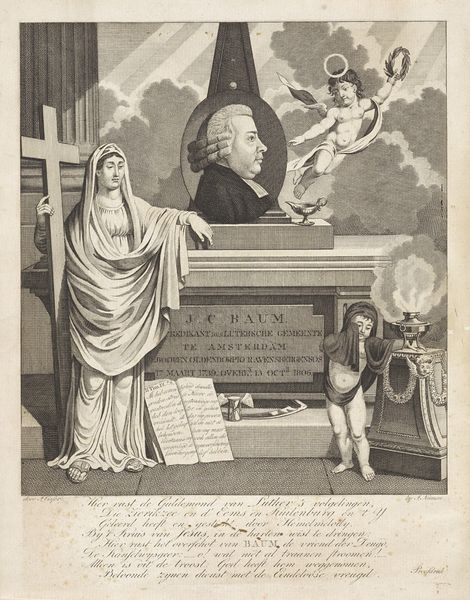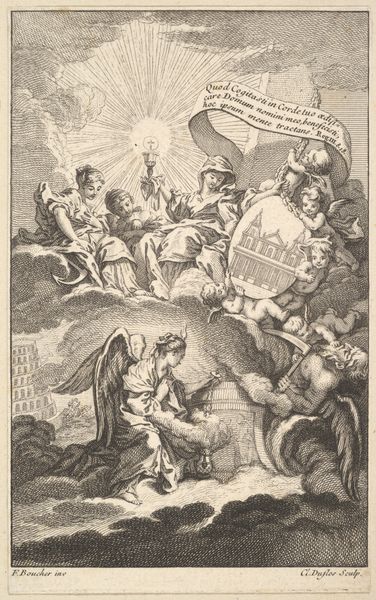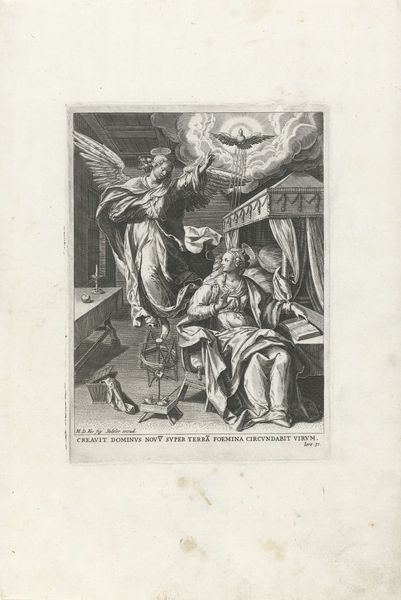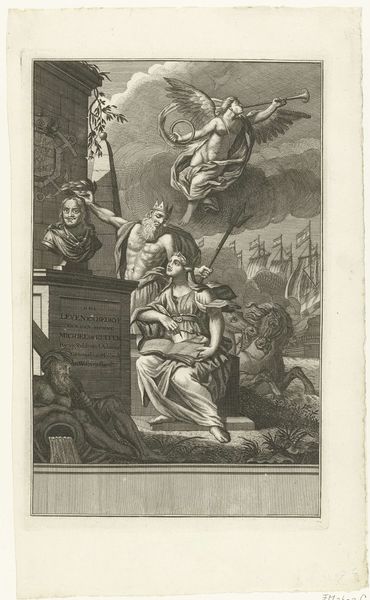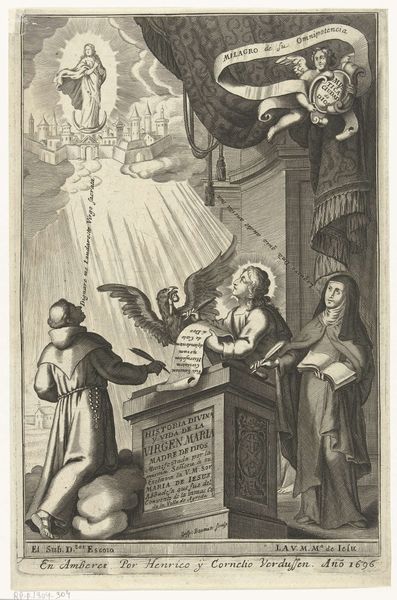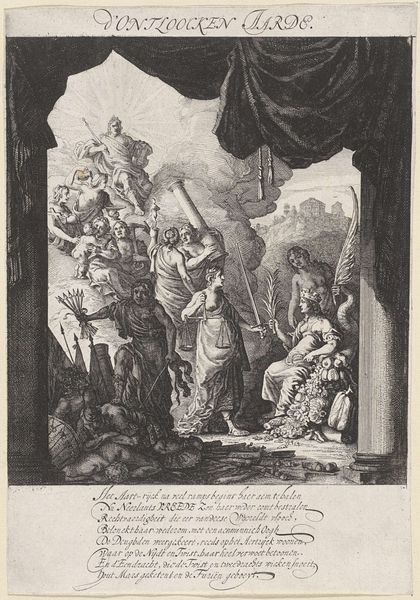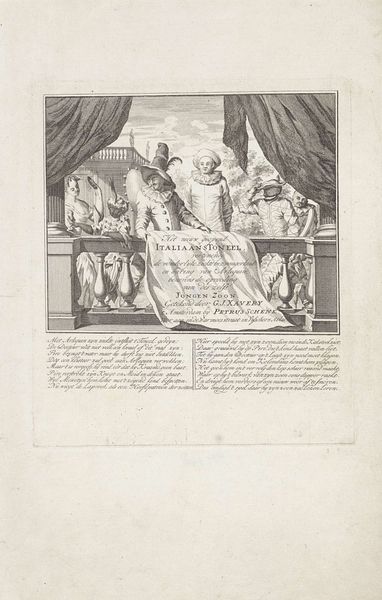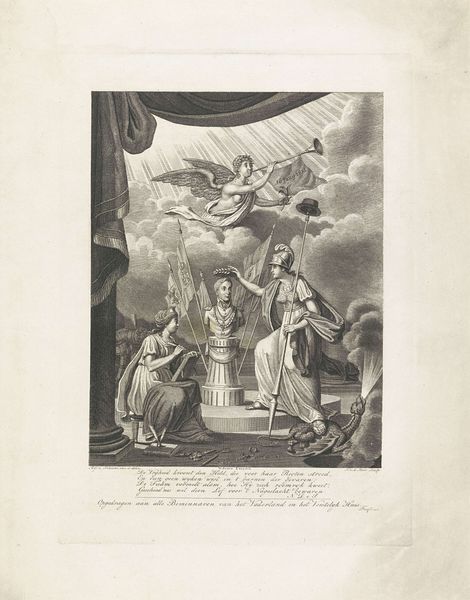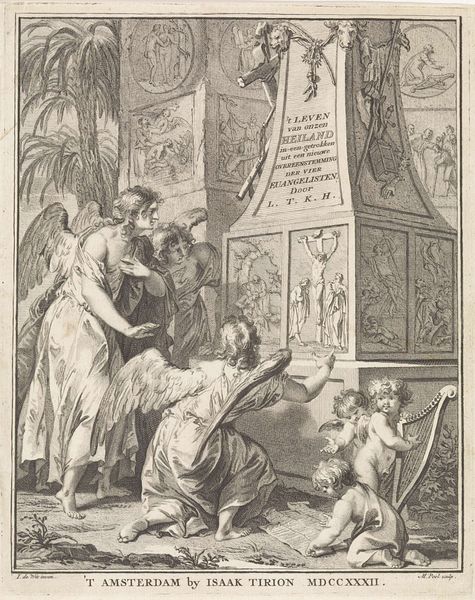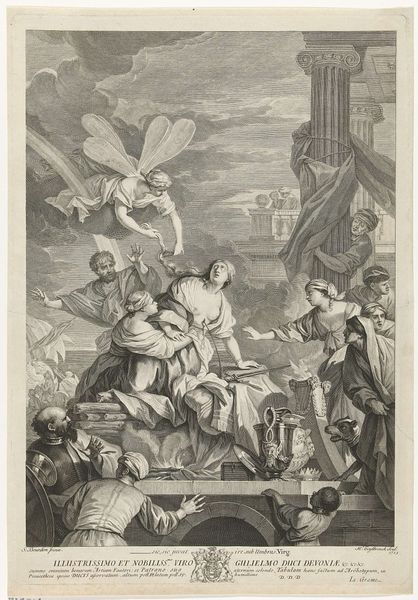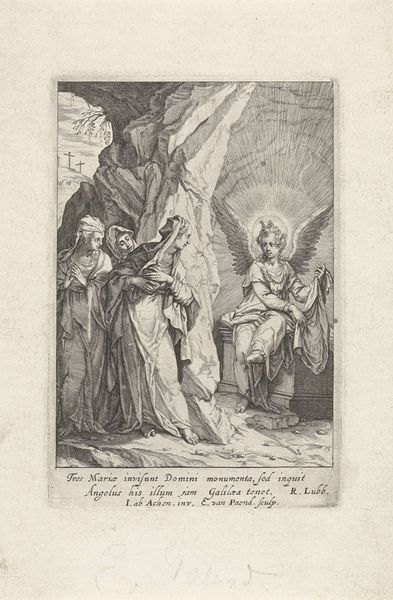
engraving
#
neoclacissism
#
allegory
#
dutch-golden-age
#
history-painting
#
engraving
Dimensions: height 295 mm, width 233 mm
Copyright: Rijks Museum: Open Domain
Curator: Look at this. This engraving from 1806 is titled "Allegorical monument to Prince Willem V." It was created by Jan Gerritsz Visser. It feels grand, doesn't it? Editor: Yes, almost theatrical, but in monochrome. The grey really emphasizes that classical monumentality. It evokes a profound sense of stillness and solemnity, like a stage set after the tragedy. All the symbols look almost chiseled, as in, enduring over time. Curator: You picked up on that sense of permanence, which I think is a clever artistic strategy. It utilizes allegory quite deliberately. Take, for instance, the muse poised with a stylus. Is she recording history, mythologizing it, or both? Editor: It's all tangled up, isn't it? A kind of cultural memory project right before our eyes. The figure has such a blank expression though. Is that the sadness for the Prince, or, maybe more profoundly, sadness because symbols don't do what we imagine? Because Willem V was such a controversial figure, one might guess Visser sought that universality through idealized types, right? Curator: Certainly. You notice how a weeping angel or cherub leads to the Prince. They seem to be drawing attention to the face itself; however, the rest is largely iconography. Note the open book symbolizing wisdom. A chart on the side seems like something that grounds his power. Editor: That open book resting atop the chart strikes me. The divine authority with one hand over temporal dominion, charted and ready to go. This whole scene feels less like a memorial and more like an assertion of power, even after death. An elaborate justification etched in ink. Curator: But there is such tenderness and humanity there too. Just imagine how that image circulated—the hopes, the projections, the disappointments that people saw in it. Editor: Indeed! We have layers of history compressed onto paper—personal, political, artistic. Even after the passage of time, these symbols continue to beckon to us, perhaps provoking more questions than they answer.
Comments
No comments
Be the first to comment and join the conversation on the ultimate creative platform.

